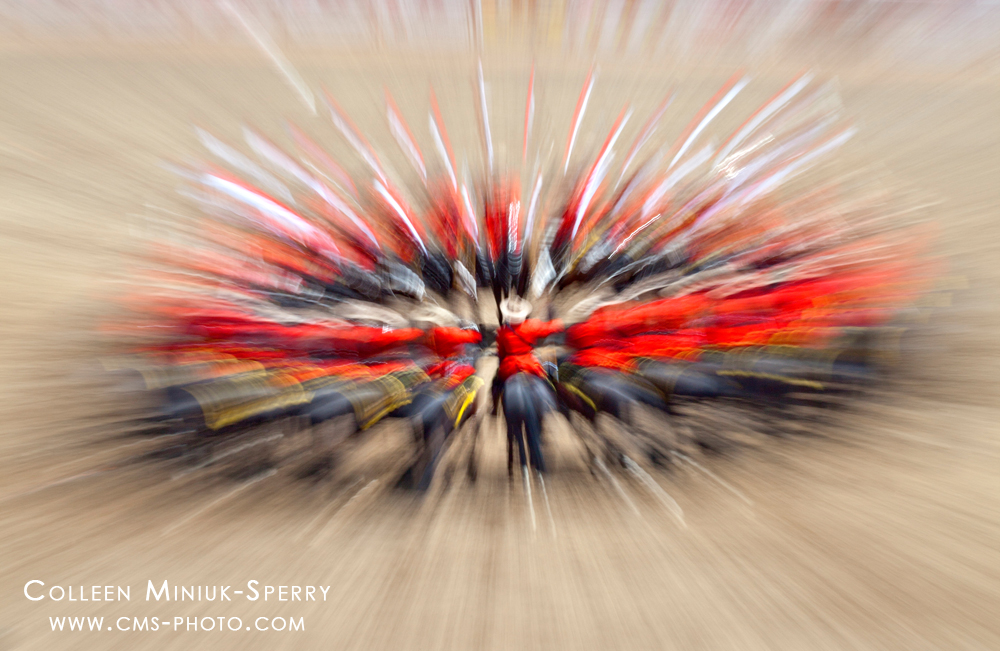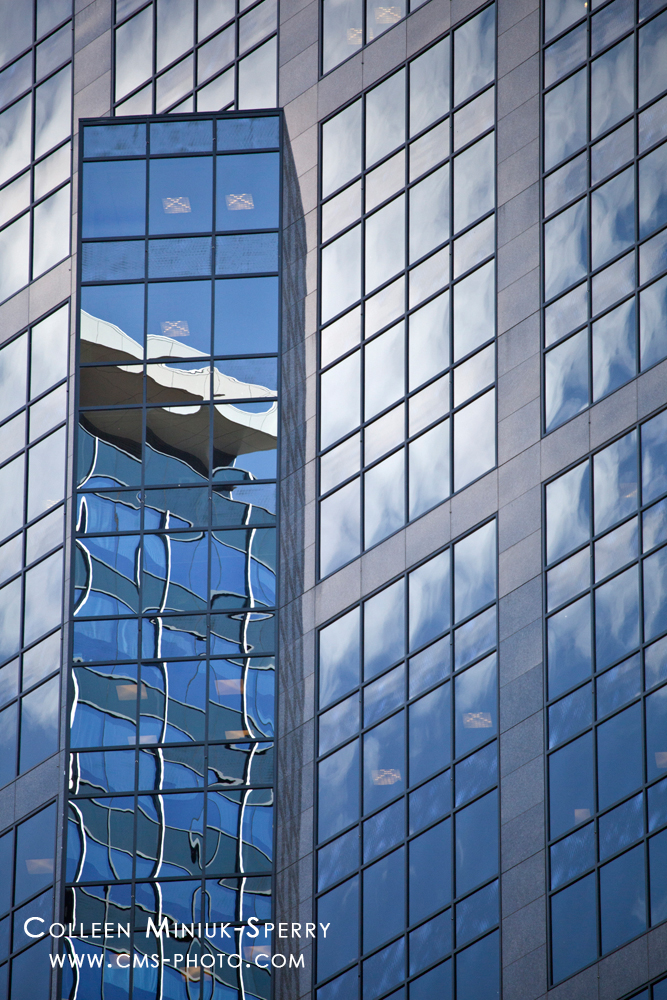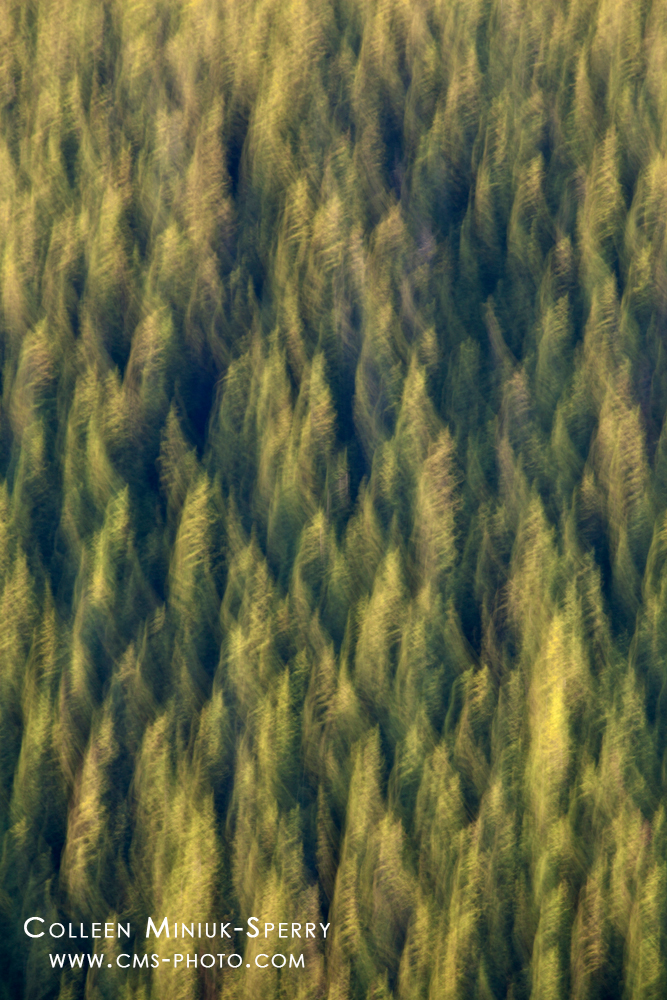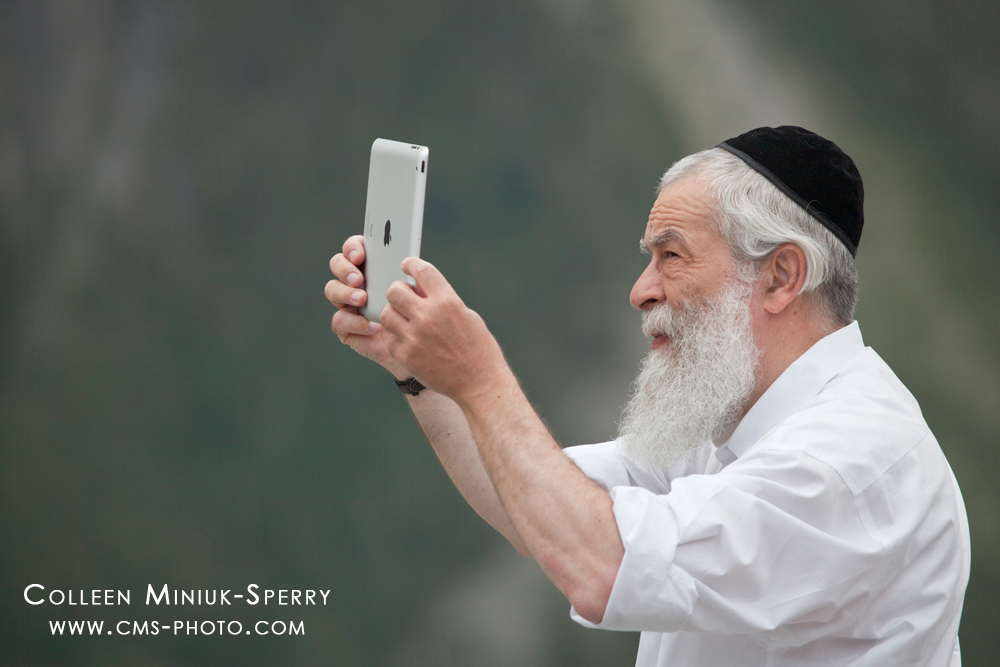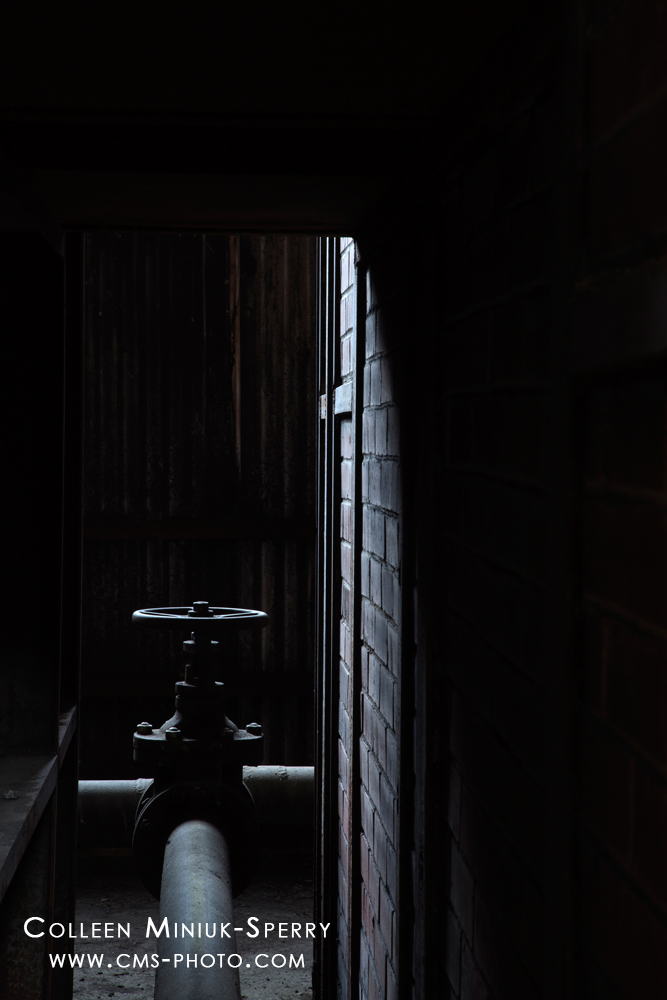“Wait, why are there so many stars out?” I murmured to myself as I stepped out of our Lake Louise-based hotel door and into the darkness.
Just a mere six hours before our 4 am wake-up call, Royce Howland and I had dashed around Banff National Park in his 4Runner, watching mammatus clouds form overhead as we chased violent, fast-moving thunderstorms whirling through the scenic valley. Serendipitously, we found ourselves capping off a thrilling evening with our cameras in the perfect position along the Bow River as the northern sky exploded into a fireball of color. After experiencing such a spectacular show by Mother Nature, we asked ourselves, “What would the morning bring?!”
As I peered at the speckled sky out the car window, my hopes for capturing moody storm clouds at Moraine Lake – our sunrise destination – disappeared as fast as the coffee did that morning…
Image #1: Though arguably half-asleep, I dragged my gear up the pathway to the top of the rock pile overlooking this gorgeous lake and found a high point to perch my camera. I started the morning with the classic, ho-hum, “everybody’s got it” composition as the sun broke through a small sliver of clouds on the eastern horizon. I normally try to avoid cliche shots, so what was my excuse for kicking off the shoot like this? I’ll take “Photography While You’re Still Half-Asleep” for $500, Alex! Jeopardy jokes aside, this image is definitely not what I wanted to say about this iconic place, but it served to get the creative juices flowing in what I considered to be less than desirable conditions...at o-dark-thirty…
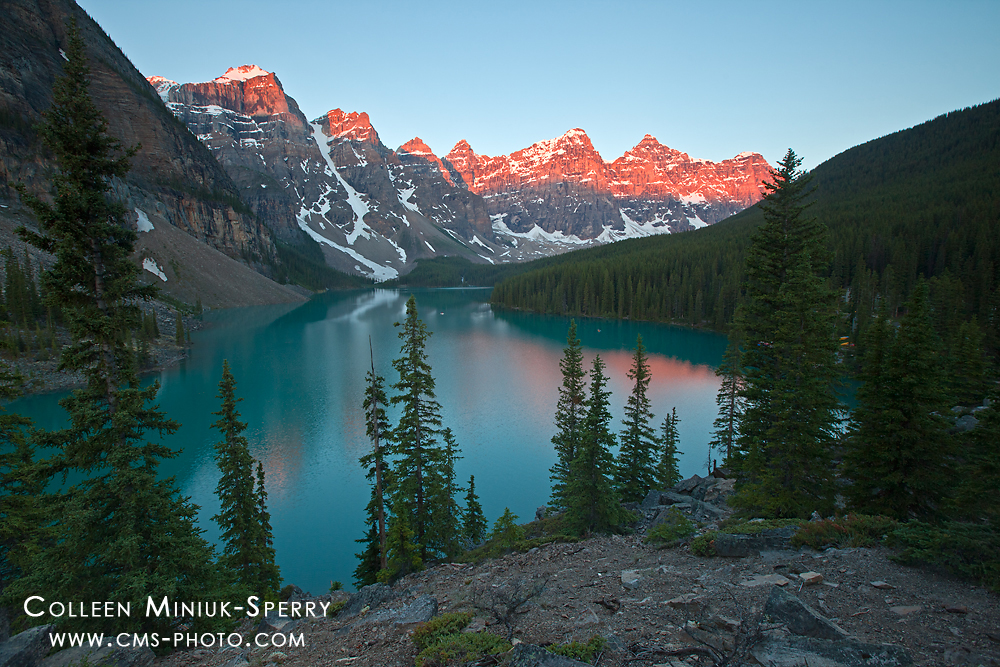
Image #2: I needed some new ideas and inspiration – image #1 wasn’t going to cut it. Immediately after snapping this shot, I noticed a small canoe leaving the dock (located on the bottom right hand side of the frame in the image above). Since the broad landscape scene wasn’t evolving to my tastes, I hiked down the hill to see if I could record people interacting with nature instead. Seemed like an easy way to capture something different here! But as I approached the dock, I quickly acknowledged that finding people awake, active, and super excited about the papparazzi at 5 am is sometimes hard to come by…but there were lots of colorful canoes willing to pose for me! With the sun tucking behind another cloud, the subdued conditions afforded me more time to undauntedly play and practice different wide-angle compositions along the shoreline, including this one of the resting boats:
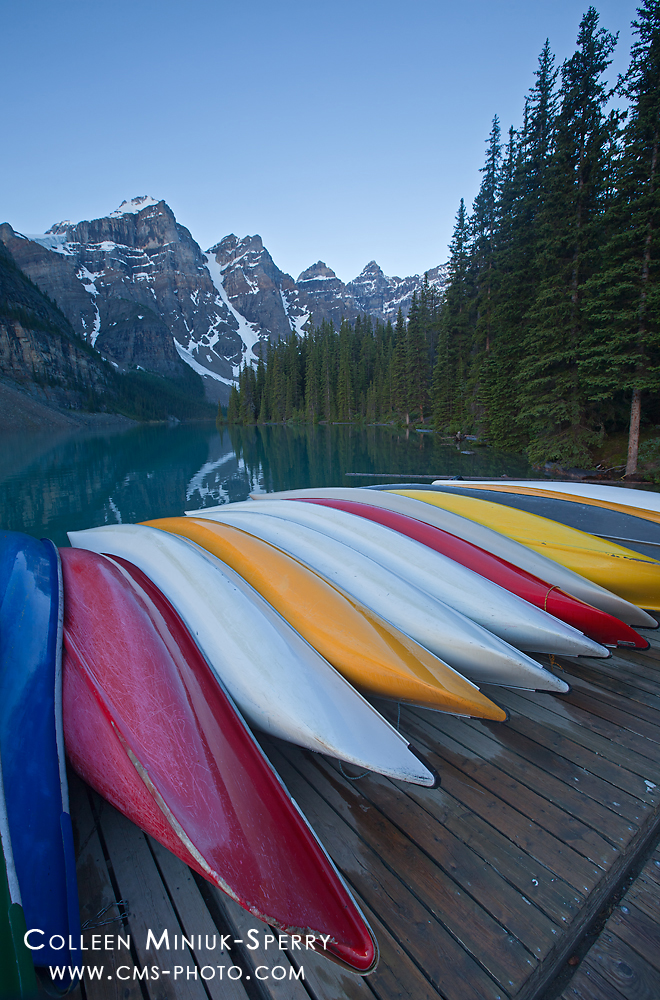
Image #2
Image #3: The diffused lighting helped the colors of the canoe stand out, but I was less than enthusiastic about the boring clear blue sky and the lack of direct lighting on the peaks in the background. Out they go! To help eliminate the sky and background, I switched to my telephoto lens and repositioned myself onto a bunch of boulders lining the lake near the dock.
By taking the unimportant elements out of the frame, I was able to then emphasize the canoes and the mirror-like reflection, which resulted in image #3 below (just as the sun peaked out again!):
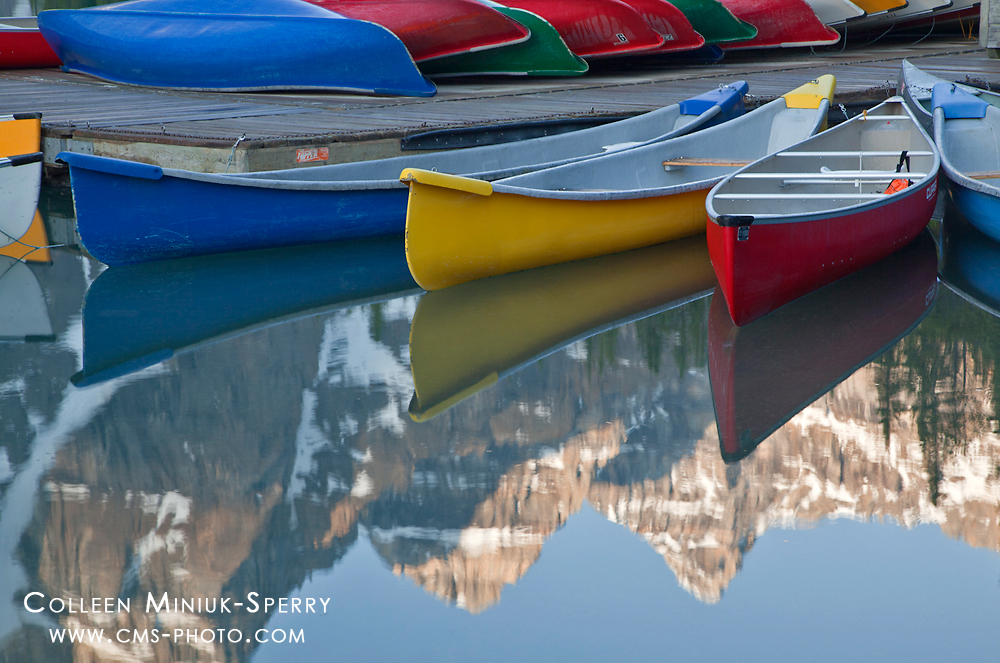
Image #3
Image #4: My eyes widened with delight as I reviewed image #3 on my LCD – we’re getting warmer! (At least the compositions were; this Arizona-based desert rat froze to death out there. Just look at all that “weird” white stuff in the mountains!) The reflected provided much needed context about where I was photographing without having to include a background I didn’t like. That said, I felt the composition in image #3 was too tight, so I put my wide angle lens back on and stepped off and behind the rocks for a broader view to record image #4:
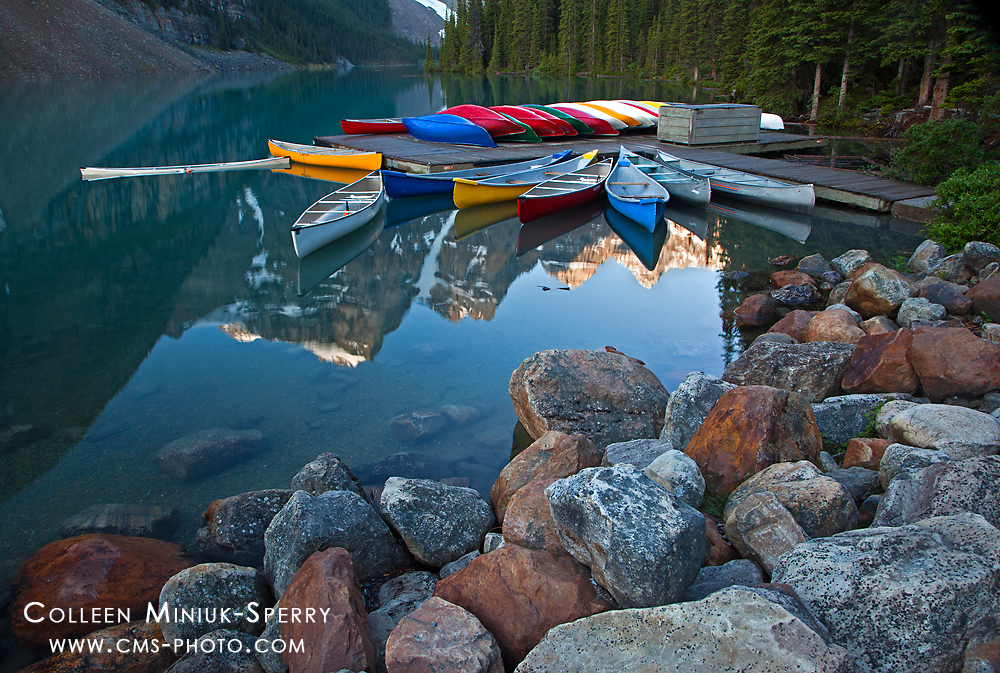
Image #4
Image #5: At this point, I felt a little like a character in the “Goldilocks and the Three Bears” story – image #3 felt too tight but image #4 felt too broad. I needed something “just right!” By adding foreground, the scene appeared to have more depth, but the rocks didn’t really add to the story I was trying to tell. The part I liked most fell right in the center of the composition of image #4, so I composed a little tighter with my wide angle zoom lens. And voila! Image #5 resulted and is the image I have selected to display in the 1st Through Each Others Eyes Arizona-Alberta Exhibition: (blog continues after photo)
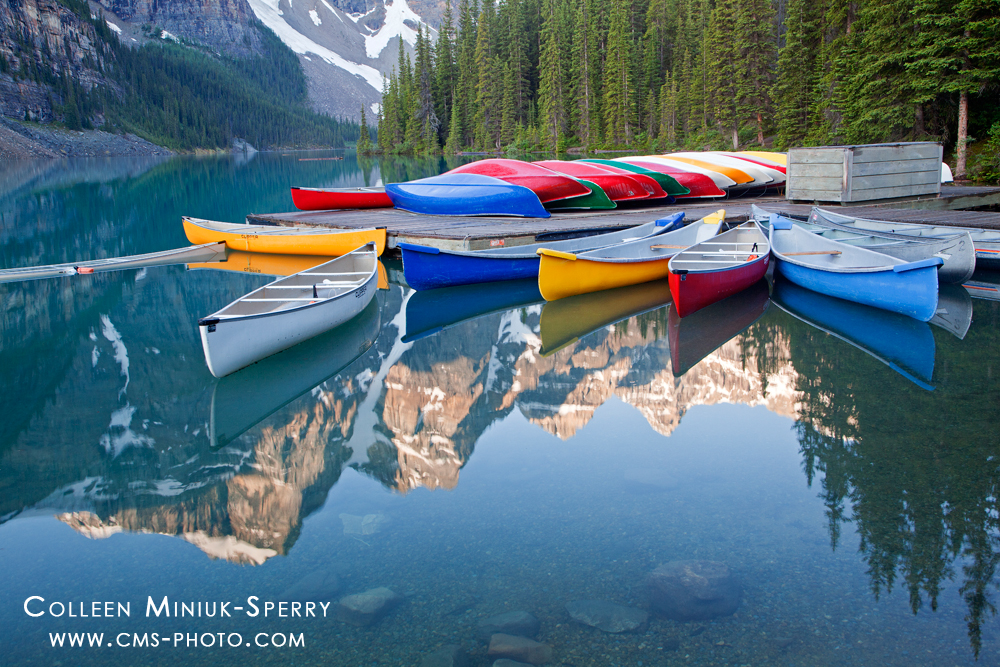
Image #5: “Reflections at Moraine Lake” to be featured in the upcoming 1st Through Each Others Eyes Arizona-Alberta Exchange Exhibition
Now that you’ve seen a sneak peek of one of the images I recorded from my time in Canada, I hope you plan to join us for the Artist Reception on November 7 from 7-9 pm at the Art Intersection Gallery in Gilbert, Arizona to see not only my 19 remaining selections, but also how my Through Each Others Eyes travel partner Ken Ross interpreted Alberta differently than I did and how Alberta-based photographers Royce and Peter Carroll viewed Arizona during their 10-day stay during our cultural photography exchange. For more information about the exhibition and artist reception, please visit the TEOE website at www.teoe.org/?page_id=829.


